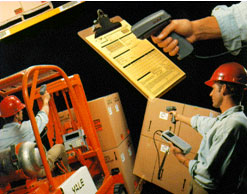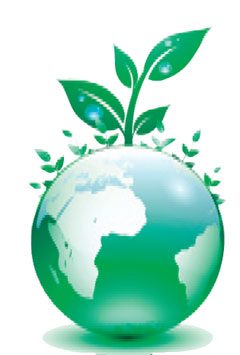3. Focus on Transportation Costs
 Like most other industries, rapidly rising fuel costs in 2008 caused consumer goods companies and retailers to increase their focus on improved transportation management – and technology. While the current environment has reduced the immediate need, long term this is likely to remain a top focus for both manufacturers and retailers. Like most other industries, rapidly rising fuel costs in 2008 caused consumer goods companies and retailers to increase their focus on improved transportation management – and technology. While the current environment has reduced the immediate need, long term this is likely to remain a top focus for both manufacturers and retailers.
There are many approaches. On the retail side, chains such as JCPenney and The Bon-Ton Stores are among the growing number of retailers that have moved beyond static routing guides to dynamic routing models, powered by new Transportation Management Systems. They are driving considerable savings as a result, as suppliers post their planned shipments and receive detailed routing and pick-up information, usually within 24 hours. This often enables the retailer to find better consolidation opportunities across suppliers, or in JCPenney’s case, sometimes bypass an internal consolidation center altogether.
A number of other retailers have embraced dock door scheduling systems to better automate the process of setting appointments for vendor deliveries at the DC, using web-based technologies. These tools allow a retailer (or manufacturer) not only to manage its own dock and yard operations more effectively, increasing potential facility throughput, but also to make it much easier for suppliers or carriers to schedule an appointment into a distribution center.
Of course, rising transportation costs are causing many companies in both retail and consumer goods to invest in TMS for the first time. Goodyear, for example, is among the companies that found tremendous savings from centralizing transportation operations in a “Load Control Center” that managed and optimized transportation plans across all ship sites in the network. Other manufacturers, such as Kraft, are finding significant savings opportunities right in their own trucks – using optimization technology that helps squeeze more pallets and cartons onto every trailer going to its own or retailer DCs.
Many companies are also embracing different transportation strategies. Children’s apparel maker Carter’s, for example, is moving a substantial amount of freight from truck to rail/intermodal. Shoe retailer Clarks (Bostonian and other brands) found it could gain substantial efficiencies in global moves by putting a consolidation center in China, rather than shipping direct from various Asian locations, allowing it to reduce shipping costs by using larger containers.
4. Improving Execution of Promotions and New Product Introductions
For both manufacturers and retailers, an increasing percentage of total sales and profit come from new product introductions (NPI) and promotions. But getting both NPI and promotions management right has proven to be a tough nut to crack.
It starts with formally including new product introduction goals, forecasts and inventory transition plans into S&OP processes, to help ensure the entire supply chain is aligned behind those plans. The CEO of Heinz, for example, made it clear to both marketing and the supply chain that accurate forecasts and data into the S&OP process were critical for company success – and that the days of either “sand bagging” new product or promotions forecasts, or delaying the communication of potentially bad news about actual results, could no longer be accepted.
The rapid rise of the “customer logistics team” concept also plays a key role, as these teams at consumer goods companies work to synchronize NPI and promotion plans at individual retailers, as leaders like Campbell Soup are executing with great success. Demand planning tools that have new capabilities to better forecast NPIs and promotions are also playing an increasingly important role. The tools are making it easier, for example, to combine the demand profiles for related introductions of previous products into a new profile for an NPI, and to use an increasingly sophisticated array of “attributes” to understand and forecast demand at the SKU level. Those nuances can significantly improve the forecast accuracy for new products.
But in the end, it also boils down to execution. On the promotions’ side, the ability – or lack thereof – for individual retail stores to get promotional displays out on the floor in synch with promotional and advertising plans is critical for success – but a continued weakness for many retailers. Here, RFID has already shown big benefits for a handful of manufacturers.
Expect increasingly more intelligent systems that provide store managers and manufacturer account reps with “electronic check lists” and alerts based on RFID data to get closer to perfection in terms of promotional execution – and better feedback to inventory and replenishment systems to track the actual success of those promotions.
5. Building the Green Supply Chain
 Retailers and consumer goods companies have been on the forefront of the move to reduce carbon emissions and develop a Green supply chain. Retailers and consumer goods companies have been on the forefront of the move to reduce carbon emissions and develop a Green supply chain.
Of course, the movement in retail gained significant momentum as Wal-Mart announced a number of major initiatives in this area over the past several years – in effect, forcing its suppliers to get a dose of Green religion whether they were of a mind to or not. If Wal-Mart can really find a way to double the fuel efficiency of its truck fleet over the next 10 years, it will not only reduce its carbon emissions, but add millions to the bottom line as well from lower transportation costs.
Wal-Mart has also taken the lead in requiring “packaging” scorecards for most of its suppliers, and more detailed “materials” scorecards for electronics suppliers. Home Depot, meanwhile, has identified more than 2,500 “Eco Option” products, including all-natural insect repellents, front-loading washing machines, organic plant food, and vegetables in biodegradable pots
The Green supply chain movement has clearly helped highlight opportunities to save material and transportation costs through minimizing packaging to only the level needed to meet logistics and consumer information needs. It has led, for example, to a new, more rectangular version of the traditional milk carton that improves trailer loading efficiency by as much as 50%. There are hundreds more of these types of opportunities.
What do you think are other key trends in the consumer goods-to-retail supply chain? What is your company or your clients focusing on? Let us know your thoughts at the Feedback button below. |